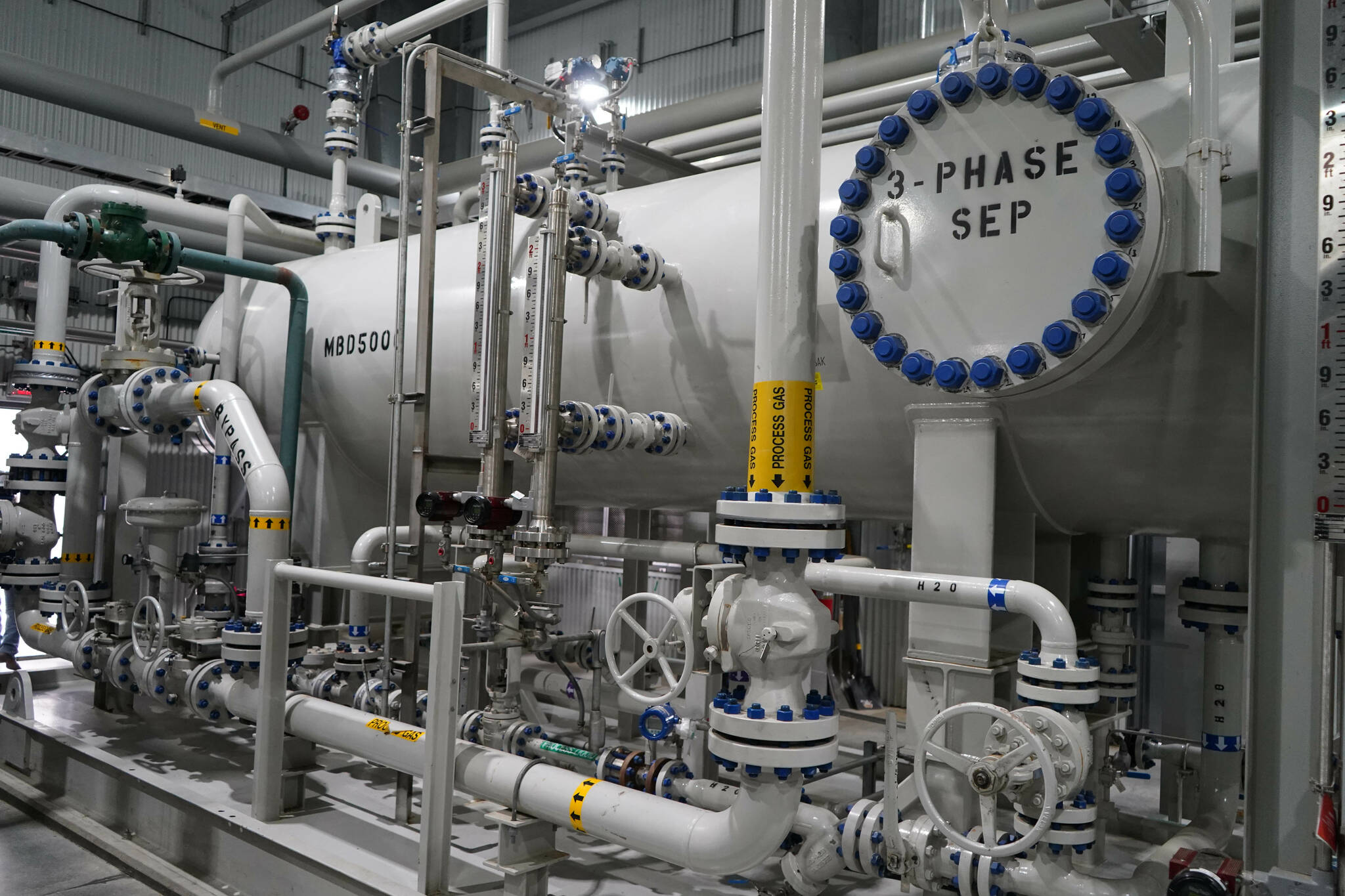A proposed integrated liquefied natural gas import terminal could be operational in lower Cook Inlet by 2028. That’s what Texas-based Excelerate Energy said during its second-quarter 2024 earnings call with investors on Thursday, Aug. 8.
Central to Excelerate’s update were announcements of two LNG projects, a terminal in northern Vietnam for which they’ve already signed a term sheet and a proposed terminal in lower Cook Inlet that they say they are in “advanced discussions” with local utilities to develop.
Craig Hicks Jr., vice president of investor relations, said during the call that in Alaska, the local region “will need” to import LNG to meet natural gas needs. The proposed terminal would source LNG “as required” and sell it to local utilities.
A presentation shared as part of the update says that the proposed terminal would center a floating storage regasification unit in the inlet. Per Excelerate’s website, FSRUs both transport and vaporize liquid natural gas. They then can deliver the product to a receiving facility.
Under the proposal, Excelerate is “expected to own” both the FSRU and the local terminal — per the presentation — while being responsible for supplying and selling gas. The company is expected to have “exclusive ownership” of regas — the process of transforming liquefied natural gas back into a gas product — capacity in the area. Sale agreements with local utilities are “expected” to include payment for the infrastructure as a take-or-pay obligation that would obligate the purchasers to take the product or pay a penalty.
Excelerate Chief Commercial Officer Oliver Simpson said during the call that there are multiple options for how the project could manifest, declining to specify whether Excelerate would convert existing facilities in Nikiski or construct something new.
“We see the demand for gas in the Cook Inlet region, that’s what we’re focused on,” he said. “We’ll work on the best technical solution.”
Though Excelerate hasn’t yet signed any agreements for the project, Hicks said that the project was advancing in a way that makes the company feel “comfortable” to talk about it. The decline in domestic LNG production, he said, “is a real thing, moving at a real pace.”
Hicks also said that Excelerate wouldn’t comment on the cost of the project.
“There is going to be a need for this bridge,” he said. “It’s going to have to happen.”
Simpson said that the described target for commencing operations in 2028 is “achievable.”
“There’s a process we’re going to go through in the region,” he said. “We’ll keep working with our partners. We’re confident we can move this along fairly quickly.”
Enstar Natural Gas is a part of the Alaska Utilities Working Group, who in June 2023 released a report saying that Cook Inlet gas cannot meet the demand forecast at current productivity levels, having plummeted from around 200 billion cubic feet of natural gas per year in the mid-2000s to around 70 billion cubic feet per year in 2022.
Hilcorp Alaska, the “largest operator and gas supplier in the state” according to that report, warned in April 2022 of a possible shortfall, telling purchasers they couldn’t rely on Hilcorp beyond existing contracts.
An application was filed in May, first reported by the Anchorage Daily News, by the Alaska Pipeline Company, an affiliate of Enstar, seeking expansion of the utility’s service area to connect its existing pipeline to a “future liquefied natural gas import terminal” at Port MacKenzie in the Matanuska-Susitna Region.
That expansion would cost $56.6 million, per the application. It was approved by Regulatory Commission of Alaska on July 22. The “future” terminal in the Mat-Su seems to be separate from the one described by Excelerate, who specified that their project would be located in lower Cook Inlet.
The application says that Enstar has a “gap in its gas supply portfolio” of around 7 billion cubic feet starting in 2025, including 4 billion cubic feet required by Homer Electric Association.
Lindsay Hobson, communications director for Enstar, in a written statement said that the company couldn’t comment on specific projects “due to ongoing confidential commercial negotiations,” but that the utility is “laser-focused on securing additional gas supplies and continuing its 60-year history of safe and reliable natural gas service to homes and businesses in Southcentral Alaska.”
“As part of this process, Enstar continues to engage local producers and LNG import service providers,” she wrote. “If and when any commercial discussions are finalized, ENSTAR will file agreements with the Regulatory Commission of Alaska for approval and share that information with Alaskans.”
Reach reporter Jake Dye at jacob.dye@peninsulaclarion.com.


